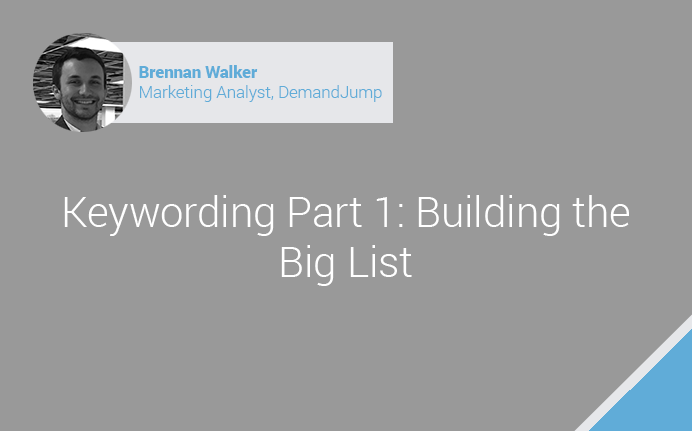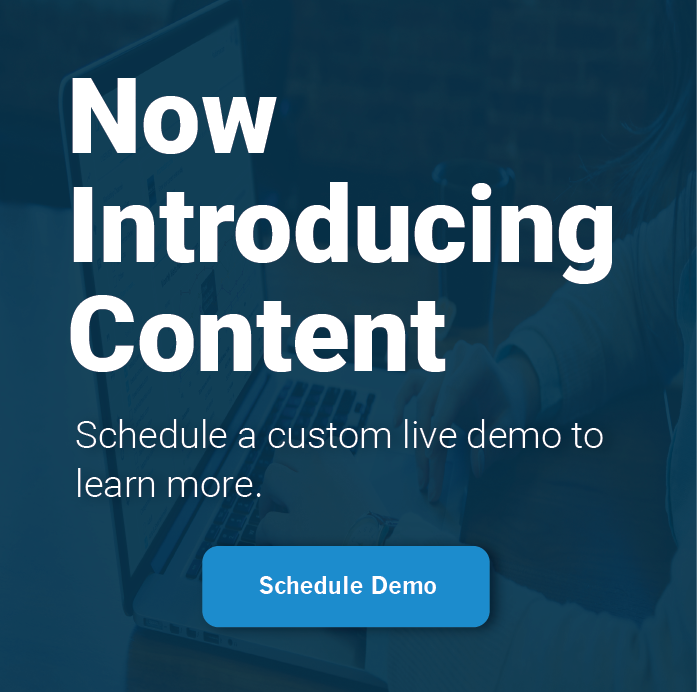Keywording Part 1: Building The Big List
July 7, 2016 •Brennan Walker

Today marks the beginning of our newest series, Keywording with Brennan. In this series our, Head Client Success Manager, Brennan Walker will take you through the keys to successful keywording.
In 2016, keywording still plays a substantial role in SEO, and it’s important that you’re taking advantage of every possible chance to improve your site’s rank.
In a recent Yoast blog post, Marieke van de Rakt talks about the importance of long-tail keywords for smaller websites. Using long-tail keywords that describes what makes them special gives smaller companies a chance to rank.
Trying to rank for a keyword like “travel” or “vacation” is extremely difficult because that space is very saturated. That makes individual keywords expensive to rank for, which puts smaller companies at a disadvantage.
As Brennan explains, choosing a keyword strategy can be difficult, but by focusing on your company’s mission and using keyword tools you can optimize your ranking by utilizing long-tail keywords and phrases.
Using the DemandJump platform Brennan is able to put in a few relevant keywords and get out a detailed view of the entire ecosystem for a company. From there he puts the most relevant keywords into the Google AdWords: Keywords Planner to get an idea of what the competition looks like and see metrics like the average monthly searches.
Lastly, Brennan will aggregate all of this data in a spreadsheet and analyze which keywords will be most effective.
If you enjoyed this video please come back next week for part 2, and if you’re interested in watching more DemandJump videos you can check them out on our YouTube Channel.
Transcription:
Begin transcritption
Introduction
Hi, I’m Brennan Walker, I’m a marketing analyst and the Head Client Success Manager at DemandJump. What that entails is helping our clients make sure that they're successful in all of their marketing initiatives.
One thing I've been tasked with pretty often his identifying new keywords and content strategies for clients moving forward, that get passed the first level of keywords. Essentially that means—What does your company do? What are your main value adds.
People really struggle with identifying long tail keywords and more granular specific keyword phrases and strategies within their content production. So that’s what I’m going to be talking about today—the different tools I use to analyze and create those strategies for our clients.
Step One
So step one is really trying to identify what the client's goal is and what keywords are important to them. It might be their main value adds, what features are important, and really the main product that they provide. For [DemandJump] it would be digital marketing platform or marketing automation platform things along those lines.
Identifying the first layer of keywords provides great input for me to then start off the process of identifying the competitive lay of the land or trends within the industry.
One tool that I use to really identify the lay of the land for myself and then also for the client is the DemandJump tool to identify topics that are relevant within a client's content ecosystem.
We pull in different topics using our natural language processor. What that does is tell you what is being talked about and all pieces of content within an ecosystem. From there I will also take what the client says in terms of what's important to them, their value adds, things along those lines, and I'll create a list of probably 10-30 keywords.
Then I will load that into the Adwords Keyword Planner to provide me with some insight of what the competition might look like for a specific keyword, as well as the average monthly searches.
Just inputting those 10-30 words generally provides a list of around 800. From there I'm able to export and then I'll have an Excel spreadsheet to then play around with to identify what keywords are important, as well as search trends, and competition.
Generally the first step is identifying what your aspirational goals are in terms of keywords as well as what the general competitive ecosystem is to push us in the right direction for starting to pull in this data and analyze it.
End of transcription
Featured Articles
Categories
- Attribution Tracking (13)
- Channel Optimization (11)
- Consumer Insights (68)
- Content Marketing (251)
- Data Science (8)
- Digital Marketing (6)
- Digital Transformation (26)
- Enterprise (10)
- Lead Generation (14)
- Market Intelligence (8)
- Marketing Analytics (39)
- Marketing Attribution (57)
- Marketing Management (153)
- Marketing Operations (86)
- Organic Search (222)
- Paid Search (52)
- Pillar-Based Marketing (63)
- Programmatic Advertising (9)
- SaaS Content (14)
- SaaS Marketing (29)
- Search Marketing (111)
- SEO Keyword Research (28)
- SEO Pillar (18)
- SEO Strategy (46)
- SMB (5)
- Website Content (12)


